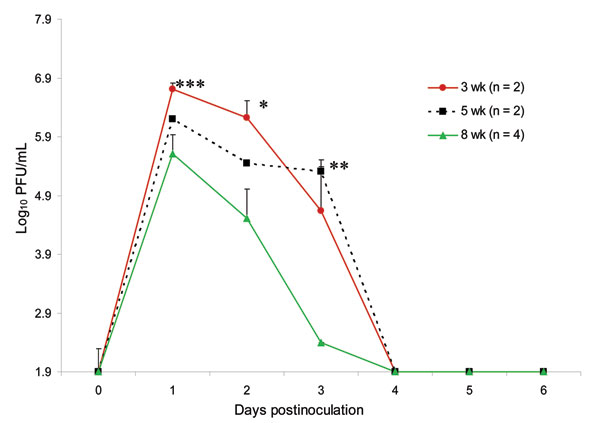Volume 13, Number 8—August 2007
Research
Venezuelan Equine Encephalitis Virus Infection of Cotton Rats
Figure 4

Figure 4. Age-dependent viremia in Florida cotton rats inoculated subcutaneously with 3 log10 PFU of subtype IE Venezuelan equine encephalitis virus. Randomly picked female and male animals aged 3–8 weeks were inoculated subcutaneously with 3 log10 PFU. Significant differences were detected on day 2 postinoculation (*p = 0.007) and day 3 (**p = 0.02) but not on day 1 (***p = 0.06). Bars indicate standard errors of the means.
Page created: June 30, 2010
Page updated: June 30, 2010
Page reviewed: June 30, 2010
The conclusions, findings, and opinions expressed by authors contributing to this journal do not necessarily reflect the official position of the U.S. Department of Health and Human Services, the Public Health Service, the Centers for Disease Control and Prevention, or the authors' affiliated institutions. Use of trade names is for identification only and does not imply endorsement by any of the groups named above.